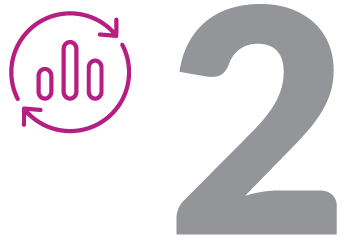Case Study: New Brunswick Tourism

Tourism New Brunswick is a government organization that is responsible for growing tourism in the province. The organization operates the province’s official travel portal and collaborates with cities and attractions to reach and engage their target audiences.
“No-Hassle Travellers’ are 93 percent more likely to visit New Brunswick than the average Canadian Household. We never would have known this before.”
Challenge
Solution
-

While most organizations in the tourism sector want to know about visitors to a particular attraction, Tourism New Brunswick sought to capture guest insights from across the province. The tourism department considered other approaches, like intercept surveys or visitor count data, but they were deemed to be cost-prohibitive and time-consuming. The tourism department wanted to use privacy-compliant mobile location data to serve as a proxy for transactional data, similar to the way malls and communities use it to analyze their visitors, but the scope of the project was beyond anything attempted with the technology so far.
-

With no single point of entry to monitor, Tourism New Brunswick identified 91 areas of interest it wanted to study. These areas included tourism regions, entry and exit points (road, water, and air), major highway segments, census metropolitan areas, scenic drive segments, national and provincial parks, town centres and attractions. Each area was geofenced to observe the mobile devices that were found entering and exiting those areas. Over 22 months, data from more than 160,000 devices were collected, which represents seven percent of visits to the province. By inferring the common evening location for those devices, it was able to assign almost 90 percent of those devices to their respective postal codes or ZIP codes. -

Using the postal code information, the department was able to link these anonymous visitors to their respective PRIZM segments to better understand their behaviours, preferences and attitudes. Since this was the first experience with mobile data, the organization also compared the results to other trusted sources. This analysis showed that these mobile data were very much in line with the national estimates and occupancy data. By doing a more in-depth analysis of the mobile data, the tourism department was able to detect travel patterns within the visitor segments. Their analysis answered many of the questions they have been trying to explain, including insights into seasonality patterns, time spent in the province, popular routes and attractions, and more.
Results
Mobility analytics can provide insights for areas where there is limited or no transactional data. For the first time, Tourism New Brunswick was able to link the segments it targeted in its campaigns to actual visitation to the province. For example, the mobility data revealed that the PRIZM segment Mini Van & Vin Rouge was 24 percent more likely to visit New Brunswick than the average Quebec household. By looking at the origins of the devices, the tourism department could also understand the difference between Canadian and American travellers. The analysis reveals Canadian visits peak very noticeably in the summer months, whereas visits from the U.S. peak later in the year.
With mobility data, Tourism New Brunswick was able to determine that a significant portion of visitors made it their destination of choice. Almost half of the Canadian visitors and 35 percent of U.S. visitors spent at least one night in New Brunswick. These insights are now allowing Tourism New Brunswick to refine and optimize its segments from one year to the next.
With this approach, Tourism New Brunswick can also identify which segments are not performing well and understand why in order to affect change and grow visits.

